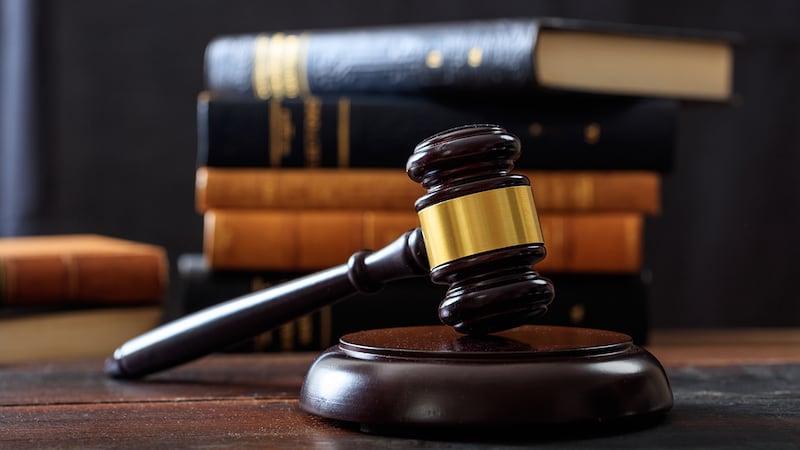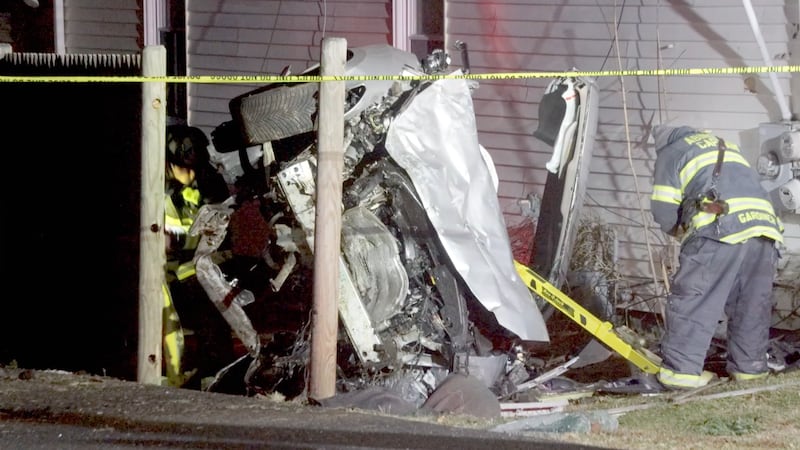BOSTON — In the moments before her death, Dr. Lina Bolaños made several desperate calls to 911 from a cell phone, but help did not arrive in time.
Phone records and trial evidence from the May 5, 2017 murder indicate Boston 911 dispatchers may have had trouble determining her exact location and delayed sending assistance. By the time police finally arrived, Bolaños and her fiancé, Dr. Richard Field, lay dead in a pool of blood inside their eleventh-floor penthouse on Dorchester Avenue in South Boston.
“It's technology, so 99 percent of the time it works well but sometimes it doesn't,” said Jeff Farnsworth, chief of Hampden Police and president of the Massachusetts Chiefs of Police Association. “When you get into, especially higher population density areas, and large building and multilevel dwellings it begins to get challenging.”
Bolaños’ case highlights the challenges of calling 911 from a mobile phone. According to Farnsworth, wireless calls often do not provide dispatchers with enough information to pinpoint a caller’s exact location, despite a phone’s GPS tracking data.
“The GPS data is not going to differentiate what floor you are on,” said Farnsworth, adding that unlike landlines which immediately provide dispatchers with the caller’s precise name, number and physical location, a cell phone’s GPS tracking data typically provides a general location that may be within meters of the actual position. “Ninety-nine percent of the time it’s coming through in a general area. It’s not going to pinpoint you exactly, but it’s pretty close.”
Mobile 911 calls are further complicated by billing information versus the actual details of the call. When an emergency wireless call comes in a dispatcher may see the billing name and address associated with the cell phone, which may be different from the name and physical location of the person making the call.
On May 5, 2017, when Bolaños called Boston 911 she used her fiancé’s cell phone, which had a Beverly, Massachusetts billing address.
The existence of the 911 calls did not become public until the case went to trial in November 2019. Since then, 25 Investigates’ Ted Daniel has been examining phone records, court evidence and 911 calls, and has learned the Boston Police Department launched an internal affairs investigation looking into how Bolaños’ calls were handled.
On the night of the murder, the Boston Police Department’s Emergency Call Center received 1,797 calls. One of Bolaños’ first calls came in at 6:41 p.m. from Field’s AT&T iPhone. A review of that call indicates dispatchers had difficulty understanding Bolaños, whose voice sounds muffled. A female dispatcher is heard saying, “911, what is your emergency? Hello? This is Boston Police. If you have an emergency and need police, press four and five for no. Hello?” before the call ends.
This recording of a 911 call made by Dr. Lina Bolaños the night she was murdered was one of eight made from Dr. Richard Field’s cell phone that night. It’s unclear which call this is from the timeline of that night. It was made public when it was introduced as evidence in the trial of her killer.
25 Investigates’ Ted Daniel listened to the calls with Nanette Cabral, a former police supervisor turned private investigator who specializes in digital forensics. One call in particular caught Cabral’s attention. In it, the dispatcher is heard saying, “Hello, can I help you? What address, please? Hello?” followed by a series of faint, garbled words from the caller. The 911 operator repeatedly asks for the location of the caller but Bolaños’ voice is no longer heard and only background noise is audible, and after more than two and a half minutes, the operator informs the caller that she’s “releasing this call.”
“She’s saying ‘please, help.’ Yes, you can hear the voice. The agony on that voice,” Cabral said after listening to the call. “I think once the call was terminated by the operator, the 911 operator, something should have been aggressively done.”
After closely listening to the call numerous times, 25 Investigates and Cabral discovered at one point Bolaños whispers her address. A faint, shaky voice can he heard saying “141 Dorchester.”
Phone records submitted as evidence in the murder trial show Bolaños dialed 911 a total of eight times in a forty-minute period, but it is unclear how many calls connected. Those records also show there were multiple call-backs from Boston Police and a State 911 call center in Framingham, where two of the calls ended up. But it does not appear there was any further voice communication.
Citing an internal affairs investigation, Boston PD would not tell us why calls were terminated or if they knew where they were coming from. But, according to Boston Police rules and procedures, when a 911 call does not respond a dispatcher must “remain on the open line until a response unit arrives.”
Farnsworth, the president of the Massachusetts Police Chiefs Association, says a dispatcher’s decision to send assistance to investigate a silent call, or a 911 that does not respond, largely depends on the availability of resources at the time.
“When the resources are available, we will dispatch somebody to the best location that we have,” he said. “It’s really incumbent upon the individual to try to do what they can to help us, and primarily tells us where you are. You can’t rely on technology to be right 100 percent of the time.”
25 Investigates wanted to know how 911 calls are handled in real time and understand how dispatch centers across Massachusetts operate. Farnsworth, the chief of Hampden Police, allowed our cameras into his facility. Each time a time a call from a landline came in, the exact location of the caller appeared on the dispatcher’s computer screen. On the other hand, when it comes to a wireless call, an approximate area appears, which is based on what the system reads as the phone’s GPS location. The accuracy of the location data is supposed to improve the longer the line is open, said Farnsworth.
We requested an on-camera interview with Boston police but were only allowed to speak by phone with Christopher Markunas, head of the city’s 911 center. Questions about the calls Bolaños made were off limits due to the ongoing investigation.
Markunas told us that steps are supposed to be taken to locate a caller, but when it comes to wireless calls that can be difficult, especially in cases where the only location data available is the position of the cell phone tower.
“That tower may cover two to three miles so it would be virtually impossible to find someone with a tower address. It gives us just a rough area of the city,” he said.
Markunas added that 911 centers can also request a cell phone caller’s subscriber information, but it is a process that may take a while. Boston PD would not say if that was attempted in the Bolaños case. Since the tragedy in 2017, text-to-911 is now available in Massachusetts. The function allows texts to be sent to and received at 911 call centers.
Read more from 25 Investigates
Do you have a tip for a story that you think needs investigating? Contact 25 Investigates or leave us a message at (800) 883-6925. If your story is one we think we can dig into, we’ll contact you back.
First on Scene Podcast: First Contact: A Brewster Ambulance dispatcher sat down with First on Scene host Blair Miller to tell us about a call where she played an important role in keeping a man alive. Her voice calmly guided the caller through the things he needed to do to get help.
© 2020 Cox Media Group





